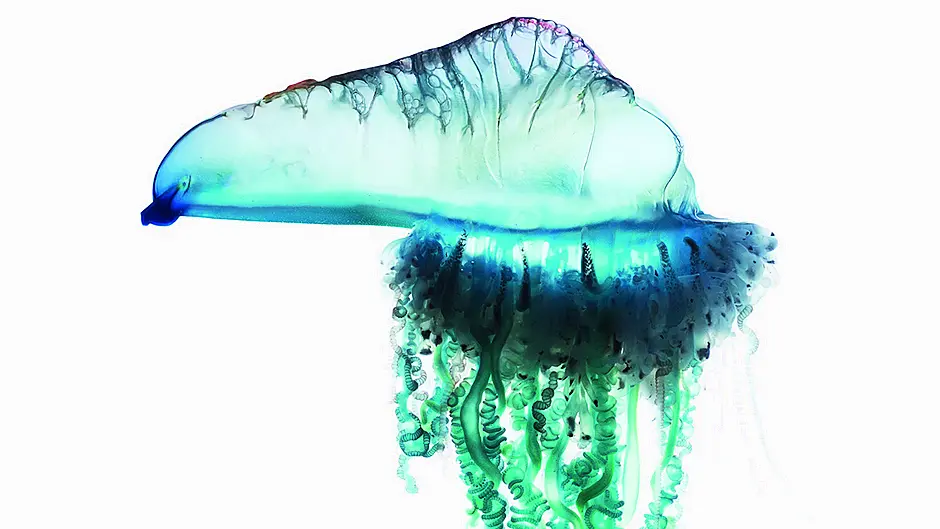ONE of West Cork’s most popular beaches was put on red alert last weekend, following the influx of the potentially-lethal Portuguese Man O’War.
Cork County Council highlighted the danger at Barleycove beach by raising what it refers to as ‘a red flag status’ on Saturday after several Man O’War littered the shore.
Swimmers, walkers, and dog owners are being urged to exercise caution because often these animals – which are sometimes mistakenly called ‘jellyfish’ but are very similar – are covered in sand and hard to see.
Cork County Council said that, following consultation with the HSE, there is now a notice in place at the beach. It is a ‘prior warning notice’ and it is the choice of the public if they wish to swim or not.
‘It is not a prohibition notice, but rather is there to warn and advise the public to exercise caution and to avoid contact with these jellyfish,’ a statement said, adding: ‘The jellyfish can be present on the shore and in the water and can inflict severe stings. Therefore, contact should be avoided.’
It also said that the length of the notice is of unknown duration but it will continue to monitor the situation at Barleycove, while liaising with the HSE.
Lifeguards are no longer on duty at Barleycove beach, as their season ended on Sunday last.
Commenting on this year’s influx at Barleycove, Calvin Jones, a guide with Ireland’s Wildlife, explained: ‘This is not a new phenomenon. There are records of this happening dating back to the 1960s. There have been a few reports of them washing up along the coast from Kerry through to West Cork during the autumn months.’
Calvin said that people mistakenly assume that the Portuguese Man O’War is a jellyfish.
‘It is, in fact,’ he said, ‘a form of colonial organism that is made up of a collection of highly specialised individual animals called polyps, which perform very specific functions.
‘They are most usually found in tropical and sub-tropical waters but have no means of propulsion, so they are at the whim of the tides and ocean currents, and when we have sustained winds from a certain direction, they hit the beaches of Ireland’s south coast.’
The tour operator described the Man O’War – which has a mauve tint to its inflated ‘sail’ and bright blue tentacles – as ‘fascinating and curiously beautiful’ creatures, but he warned people that they pack a mighty sting.
They disable prey with potent venom from specialised stinging cells and even detached particles of tentacles floating in the water can sting, as can individual pieces of the tentacles, washed up on the beach.
Calvin said: ‘If you see one of these on a West Cork beach – look, but don’t touch. Keep children and pets away and let the next tide take it back out to sea.
‘The pain usually subsides after a few hours, but in some cases the venom can cause a severe reaction that can lead to complications and, on extremely rare occasions, even death,’ said Calvin.
A young girl was rushed to Bantry hospital a few years ago when she developed an allergic reaction, after being stung by one on Barleycove beach.









